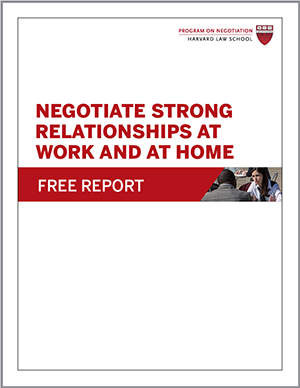
What Are Dispute Resolution Alternatives?
The news that actors Angelina Jolie and Brad Pitt are headed for divorce puts the issue of divorce negotiations in the spotlight. It also raises the question of how divorcing couples can avoid escalating what is often already a tense situation, avoid a potentially traumatic and expensive court battle, and engage in a dispute resolution process that satisfies both sides’ interests.
To take another recent high-profile divorce, the actress Gwyneth Paltrow (an ex-girlfriend of Pitt’s) and her husband, musician Chris Martin, publicly declared in 2014 their intention to “consciously uncouple.” Conscious uncoupling is a process dating back to the 1970s that involves maintaining mutual respect while parting amicably, keeping the needs of any children at the forefront, and engaging in self-reflection to avoid repeating past mistakes in future relationships.
Easier said than done? The task of negotiating child and spousal support, dividing property and other possessions, and establishing child-custody arrangements is often daunting and can cost a small fortune. But the following three conflict negotiation strategies can improve the odds of wrapping up a divorce with a minimum of stress, money, and time.
1. Mediated divorce
Rather than automatically hiring lawyers, or in addition to hiring lawyers, members of a divorcing couple can choose to hire a neutral mediator to help them negotiate the terms of their divorce.
The practice of divorcing via mediation, a form of alternative dispute resolution, is now widespread, and it’s been found to achieve higher settlement rates than litigation. But how does the quality of divorce agreements facilitated by mediators compare with that of agreements obtained through lawyers? Researcher Rachid Baitar of the Catholic University of Leuven and Ghent University in Belgium and his colleagues examined this question in a 2012 study of 469 divorcing individuals in Belgium. About half of the participants reported experiencing a high level of conflict with their spouse before the divorce; for others, conflict was less intense or minimal.
In the study, a mediator assisted 30% of participants in reaching agreement; the other 70% were helped by a lawyer. As compared with those engaged in litigation, participants who engaged in mediation reported that they reached higher-quality agreements, as measured by how tailored, fair, comprehensive, and clear the agreement was.
The results suggest that couples would be wise to be aided by professionals who believe that reducing conflict and encouraging an open dialogue are more likely to promote a satisfactory divorce than a more traditional competitive approach would.
2. Collaborative law
In the United States, lawyers who recognize the benefits of mutual-gains negotiation are sometimes stymied by vengeful clients and ruthless opposing counsel. Within an adversarial judicial system, how can lawyers conduct negotiations that don’t just carve up the pie but enlarge it?
In the early 1990s, the collaborative law movement sprang up with the goal of giving disputants the best of both worlds: a lawyer’s advocacy and legal know-how combined with the problem-solving orientation of mediation.
Now common in many states, a collaborative-law process begins when each disputant hires a collaborative lawyer and signs a disqualification agreement stating that he or she will hire a different lawyer if the decision is made to take the case to court. The prospect of having to hire new lawyers is designed to commit disputants to the negotiation process. It also eliminates the conflicts of interest faced by lawyers who could gain more financially from a long litigation process than from a quick settlement.
Disputants also agree in advance to disclose all information relevant to the case, to treat each other with respect, to jointly hire experts (such as psychologists in child-custody cases), and to address each other’s needs. In turn, their lawyers promise to serve as negotiators, not litigators, and to try to keep the process honest, respectful, and productive. Working together, the clients and their lawyers engage in a series of “four-way” meetings aimed at finding creative solutions that meet both parties’ interests.
3. Cooperative law
Collaborative law may sound ideal, but for many, hiring new attorneys to litigate after a collaborative effort falls apart is financially unfeasible. Disputants may pour time and money into a failing collaborative negotiation simply because they feel they’ve invested too much to quit. In addition, some lawyers resist the idea of “abandoning” their clients if negotiation fails.
Cooperative law, which has taken hold in a small number of states, does away with the disqualification component of collaborative law—both parties reserve the right to litigate with the same counsel if the negotiation fails—but retains its other key features, including an emphasis on mutual-gains negotiation.
Professor John Lande of the University of Missouri School of Law suggests that the collaborative and cooperative approaches could be tailored to virtually any type of dispute where civility and trust are possible, including probate, employment, medical, debt collection, and commercial practice.




